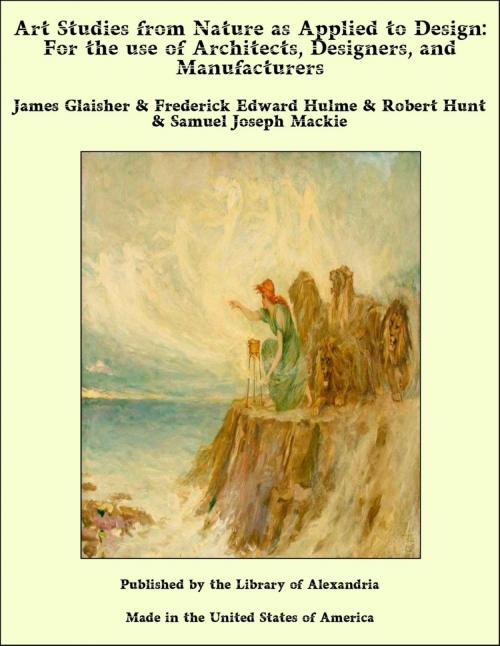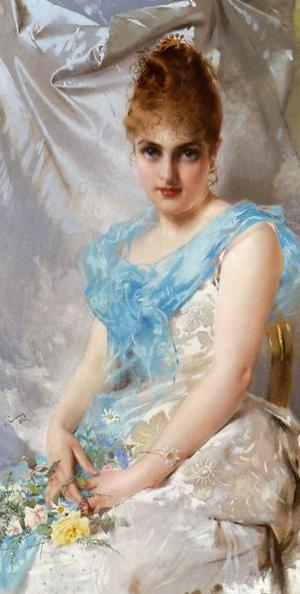Art Studies from Nature as Applied to Design: For the use of Architects, Designers, and Manufacturers
Nonfiction, Religion & Spirituality, New Age, History, Fiction & Literature| Author: | James Glaisher & Frederick Edward Hulme & Robert Hunt & Samuel Joseph Mackie | ISBN: | 9781465628077 |
| Publisher: | Library of Alexandria | Publication: | March 8, 2015 |
| Imprint: | Language: | English |
| Author: | James Glaisher & Frederick Edward Hulme & Robert Hunt & Samuel Joseph Mackie |
| ISBN: | 9781465628077 |
| Publisher: | Library of Alexandria |
| Publication: | March 8, 2015 |
| Imprint: | |
| Language: | English |
IN this series of papers it will be our desire to direct the attention of the architect, manufacturer, and designer, to some of the beautiful forms of nature, which, though easily accessible, seem to have scarcely received the consideration they deserve; to give a brief account of the habits, peculiarities, and localities of the plants as they come before us; to cite from time to time examples, either English or foreign, of their use in the ornament of the past; and generally to add such details as may directly or indirectly tend to create an interest in the plant in question. We find, on looking back at the past history and practice of ornamental art, in the midst of many marked differences of style, one principle very generally observed—the use in the ornament of any given country of the plants familiar to the people. Hence, the Egyptians exclusively used in their ornament the plants of their own land; we see the palm branch, the papyrus, and the beautiful lily of the Nile constantly recurring. We find the Greeks and Romans employing the acanthus, olive, and vine; the Japanese, the light and graceful bamboo; and in our own Gothic styles and those of the Continent—French, German, or Spanish—we meet with more or less conventionalised representations in the carvings, paintings, illuminations, fabrics for dress, hangings, &c., of the familiar forms of our hedgerows, streams, and meadows, such as the wild rose, oak, maple, iris, buttercup, and many others. It is then with the desire to awaken our decorators to the fact, that beautiful as the Greek anthemion and other allied forms are, they by no means represent the limit available in ornamental art, that the following papers have been prepared, since we are persuaded that if once the inexhaustible riches of nature were sought after by our architects, and their beauties brought before the eyes of the people in their work, architecture would thus be taking one long step nearer to the sympathies and appreciation of many to whom it is now a matter of indifference. The works of a few of our leading architects owe at least some of their beauty to their recognition of this truth; and we would desire, while acknowledging the services rendered to architecture by such men as Pugin, Collings, Street, and Gilbert Scott, to add our mite to the revival going on around us.
IN this series of papers it will be our desire to direct the attention of the architect, manufacturer, and designer, to some of the beautiful forms of nature, which, though easily accessible, seem to have scarcely received the consideration they deserve; to give a brief account of the habits, peculiarities, and localities of the plants as they come before us; to cite from time to time examples, either English or foreign, of their use in the ornament of the past; and generally to add such details as may directly or indirectly tend to create an interest in the plant in question. We find, on looking back at the past history and practice of ornamental art, in the midst of many marked differences of style, one principle very generally observed—the use in the ornament of any given country of the plants familiar to the people. Hence, the Egyptians exclusively used in their ornament the plants of their own land; we see the palm branch, the papyrus, and the beautiful lily of the Nile constantly recurring. We find the Greeks and Romans employing the acanthus, olive, and vine; the Japanese, the light and graceful bamboo; and in our own Gothic styles and those of the Continent—French, German, or Spanish—we meet with more or less conventionalised representations in the carvings, paintings, illuminations, fabrics for dress, hangings, &c., of the familiar forms of our hedgerows, streams, and meadows, such as the wild rose, oak, maple, iris, buttercup, and many others. It is then with the desire to awaken our decorators to the fact, that beautiful as the Greek anthemion and other allied forms are, they by no means represent the limit available in ornamental art, that the following papers have been prepared, since we are persuaded that if once the inexhaustible riches of nature were sought after by our architects, and their beauties brought before the eyes of the people in their work, architecture would thus be taking one long step nearer to the sympathies and appreciation of many to whom it is now a matter of indifference. The works of a few of our leading architects owe at least some of their beauty to their recognition of this truth; and we would desire, while acknowledging the services rendered to architecture by such men as Pugin, Collings, Street, and Gilbert Scott, to add our mite to the revival going on around us.















